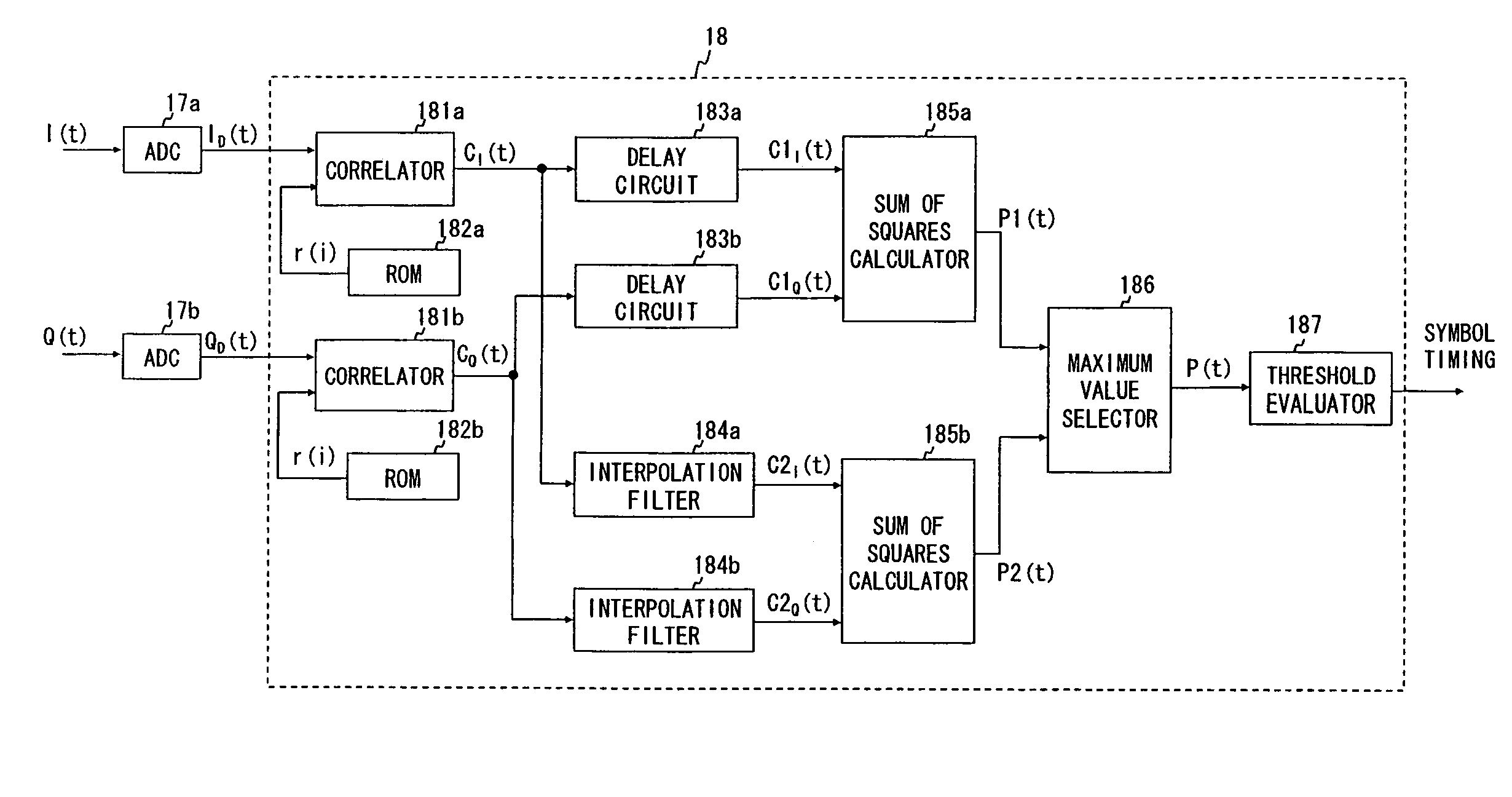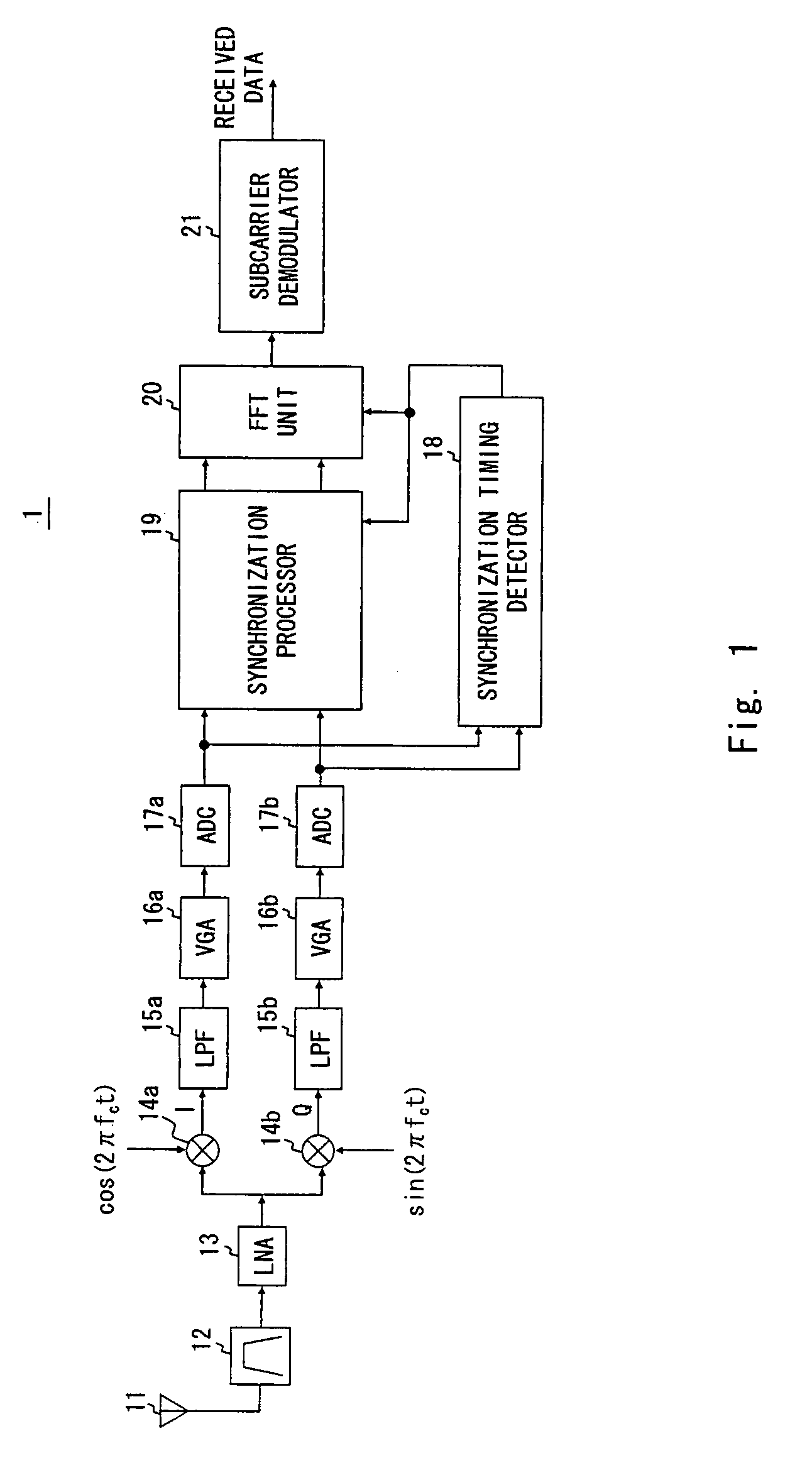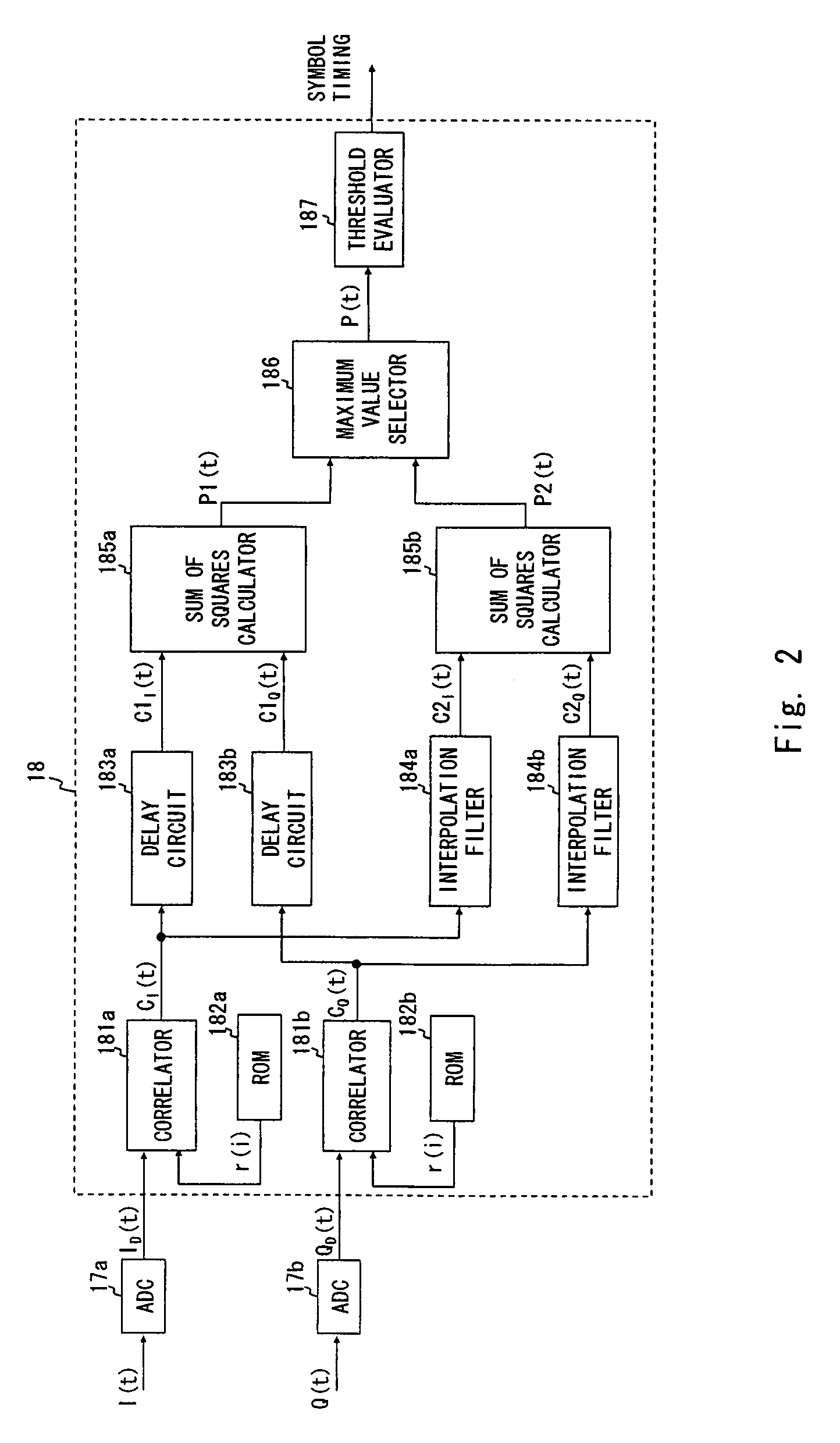Synchronization timing detecting apparatus, receiving apparatus, and synchronization timing detecting method
a synchronization timing and detecting apparatus technology, applied in the direction of synchronisation signal speed/phase control, orthogonal multiplex, amplitude demodulation, etc., can solve the problem of increasing the circuit size of the receiving apparatus, increasing power consumption, and more likely to incorrectly detect the peak of the cross-correlation value that is generated, so as to reduce the sampling rate of the reception signal, suppress the increase in circuit size and power consumption, and maintain the effect of establishing synchronization accuracy
- Summary
- Abstract
- Description
- Claims
- Application Information
AI Technical Summary
Benefits of technology
Problems solved by technology
Method used
Image
Examples
first embodiment
[0035]A configuration of a MB-OFDM receiving apparatus 1 according to this embodiment is shown in FIG. 1. Firstly an outline of receiving operations by the MB-OFDM receiving apparatus 1 is described hereinafter in detail. A signal received by an antenna 11 is selected of a frequency band by a band pass filter (BPF) 12. After that the signal is amplified by a low noise amplifier (LNA) 13. The BPF 12 is a filter for selecting a band group to receive from a plurality of band groups of the MB-OFDM. The signal amplified by the LNA 13 is input to mixers 14a and 14b and quadrature demodulated. Note that a frequency hopping is performed in the MB-OFDM. Accordingly a local frequency fc generated by an oscillator not shown and input to the mixers 14a and 14b are periodically switched according to a frequency hopping pattern.
[0036]An In-phase component (I component) signal I(t) and a Quadrature component (Q component) signal Q(t) of a complex baseband signal that are demodulated by the mixers ...
second embodiment
[0057]The synchronization timing detector 18 according to a first embodiment of the present invention is described with a case when interpolating a middle point between two consecutive sampling points. However the number of interpolation points between the two consecutive sampling points may be two or more. At this time, the interpolation filters 184a and 184b may calculate cross-correlation values C2I(k,t) and C2Q(k,t) for a given point t(k<t<k+1) between a sampling point at the time k and a sampling point at the time k+1 using following formulas (6) and (7).
[0058]C2I(k,t)=∑i=-qq+1CI(k+i)sinc(t-i)(6)C2Q(k,t)=∑i=-qq+1CQ(k+i)sinc(t-i)(7)
[0059]Further, the maximum value selector 186 may be configured in a way that it selects the maximum value from a sum of squares of a cross-correlation value in the number of N interpolation points and a sum of squares of a cross-correlation value in the sampling points, where the number of the interpolation points between the sampli...
PUM
 Login to View More
Login to View More Abstract
Description
Claims
Application Information
 Login to View More
Login to View More - R&D
- Intellectual Property
- Life Sciences
- Materials
- Tech Scout
- Unparalleled Data Quality
- Higher Quality Content
- 60% Fewer Hallucinations
Browse by: Latest US Patents, China's latest patents, Technical Efficacy Thesaurus, Application Domain, Technology Topic, Popular Technical Reports.
© 2025 PatSnap. All rights reserved.Legal|Privacy policy|Modern Slavery Act Transparency Statement|Sitemap|About US| Contact US: help@patsnap.com



